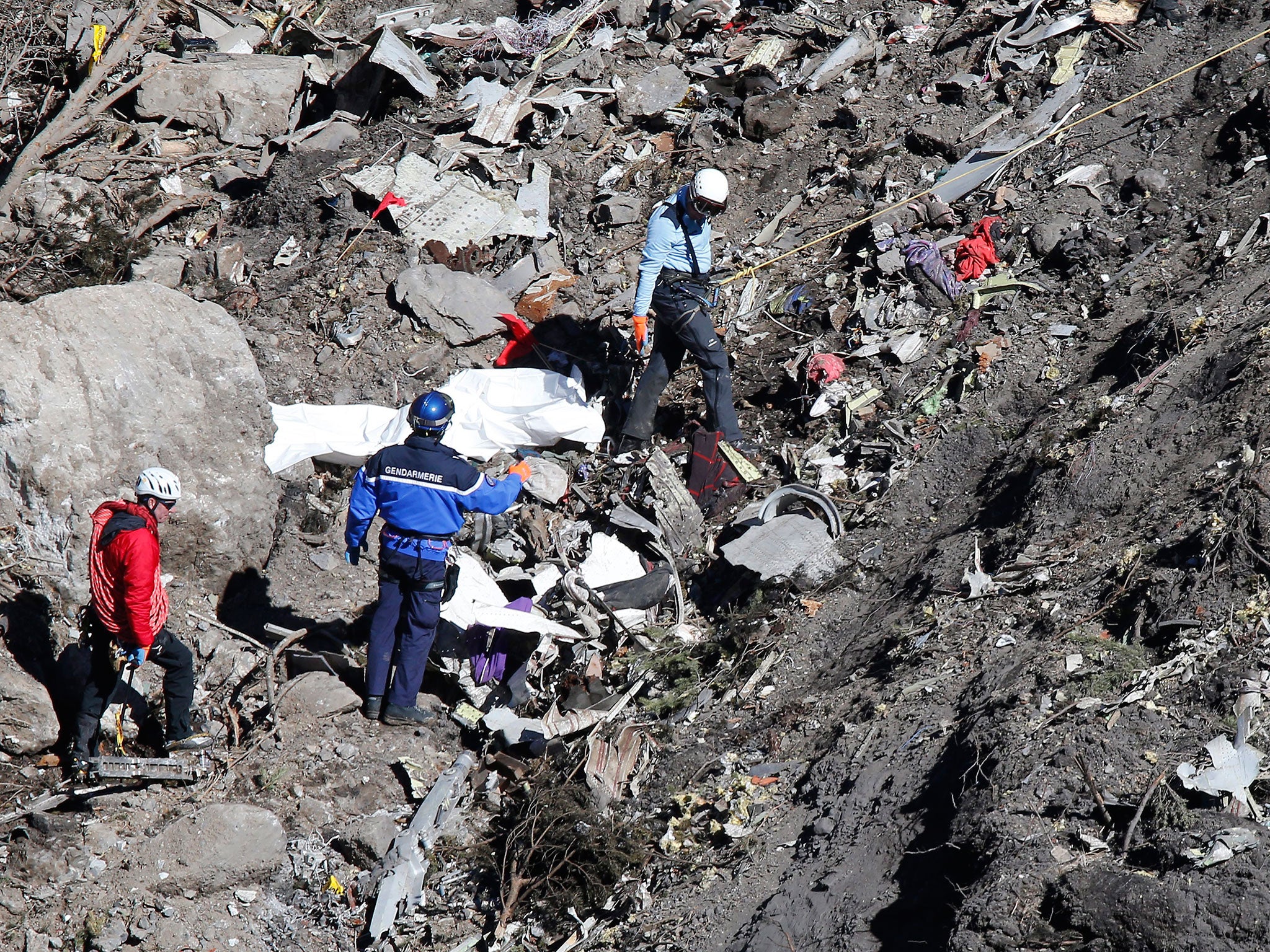Germanwings plane crash: Could lessons have been learned from previous incidents?
On both occasions the locked-out pilot had tried vainly to break through the reinforced cockpit door

Two previous incidents highlight how a “rogue pilot” could capitalise on an armoured cockpit door to seize control of a plane, a leading security expert said yesterday, but may have been discounted because they both involved African airlines.
As airlines rushed to impose new procedures on flightdeck access, a leading security expert said two previous incidents had highlighted how a “rogue pilot” could capitalise on an armoured cockpit door to take control of a plane.
Philip Baum, editor of Aviation Security International, said these events mirrored Tuesday’s fatal crash in the French Alps. In November 2013, the captain of a scheduled LAM Mozambique Airlines flight from Maputo to Luanda deliberately crashed his Embraer jet in Namibia. All 33 passengers and crew died.
Three months later, the co-pilot of an Ethiopian Airlines Boeing 767 locked the captain out of the flight deck during a flight from Addis Ababa to Rome, then diverted the jet to Geneva where he landed safely and sought asylum. On both occasions the locked-out pilot tried in vain to break through the reinforced cockpit door.
Mr Baum said: “These incidents highlight the fact that the enhanced flightdeck door, designed to keep potential hijackers outside the cockpit, can also prevent crew and passengers overpowering an intruder or pilot. While it may keep the bad guys out of the cockpit, it can also keep the good guys out too. But I believe the fact these involved African airlines meant they were overlooked.” However, an EU official in Brussels told The Independent that armoured cockpit doors had saved countless lives: “Hijacking has almost been eliminated since the reinforced cockpit doors were put into place and so many unlawful acts have been eliminated.”
Late yesterday, the European Aviation Safety Agency issued a “temporary recommendation” that EU airlines ensure a pilot is never left alone on the flight deck. Typically, if one pilot takes a break, the senior member of cabin crew will temporarily occupy the cockpit jump seat.
Some pilots have claimed that the changes are cosmetic, intended to reassure the travelling public. But the aviation expert Bjorn Fehrm said the presence of another crew member would reduce the risk of a disturbed pilot deciding to down a plane: “The barrier to psychotic moments gets
raised. Should a premeditated or psychotic moment deed be triggered, the probability of it succeeding will be significantly diminished with a second person in the cockpit.”
Join our commenting forum
Join thought-provoking conversations, follow other Independent readers and see their replies
Comments
Bookmark popover
Removed from bookmarks